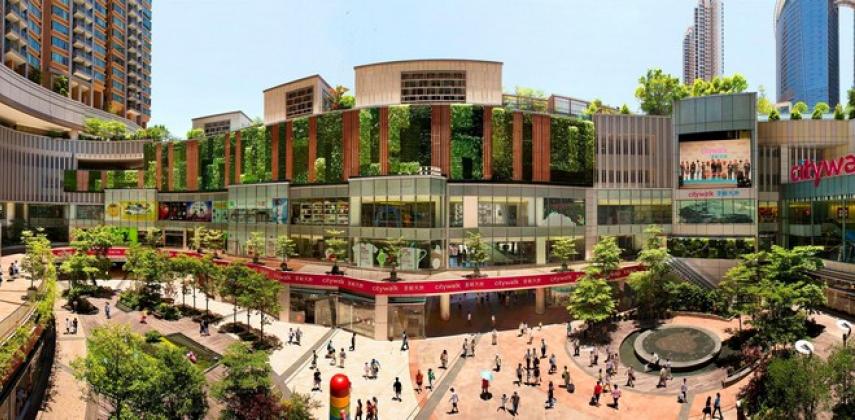The city's property sector is expected to introduce even more innovative and effective green features in buildings, from the production and use of energy to the recycling of waste and other resources.
Wong Kam-sing, chairman of the Professional Green Building Council (PGBC), says all future projects by the MTR Corporation and the Urban Renewal Authority will meet strict green criteria known as the Building Environmental Assessment Method, or BEAM Plus, standard.
"Apart from environmental protection, there are cost benefits," says Wong, the director of sustainable design at architectural firm Ronald Lu & Partners (RLP). He cites a housing project whose residents are enjoying lower management fees because of energy saving measures taken several years ago.
The PGBC is promoting environmentally friendly construction and building features. It is a non-profit research and education institute founded by professional associations, including the Hong Kong Institute of Architects and the Hong Kong Institution of Engineers.
One of its flagship projects is the biennial Green Building Award. This year, one of the Grand Awards in the existing buildings category went to Sino Group's Skylight Tower project in Kowloon Bay.
"As a socially responsible corporation, we have incorporated eco-friendly architectural designs, developed energy saving and water saving innovations, and practise green property management," says Thomas Lau, assistant general manager and a landscape architect.
Lau says Sino Group's team reviews legislation and policies before starting on a project. "A detailed project study in terms of its physical opportunities and constraints must be carried out so that the initial planning and design of the building mass, natural air ventilation and site aspect can be critically reviewed," he says.
"We consider many green installations in such areas as electrical, plumbing, drainage, swimming pool filtration and circulation systems. We also look at every opportunity to landscape the property to provide a verdant environment."
He says Skylight Tower is a pilot building that has followed the Environment Bureau's carbon audit guidelines. Measures included energy saving equipment, such as a water-cooled chiller system, LED lights, shower water taps and solar energy.
RLP received a merit award in the new building category for its dormitory and facility extension project at United Christian College in Kowloon East. It also got a merit in the research and planning category. "We want to minimise the negative impact on the next generation," says Bryant Lu, RLP vice-chairman.
The eight storey dormitory wing features a courtyard, which promotes air ventilation. As a result, no air conditioning is required in the ground-level student canteen, Lu says, adding that it used the latest computer simulation software "to optimise the basic elements and maximise the efficiency of the building".
Students who want to specialise in green building design have several options. On top of the undergraduate degree in architecture, RLP expects its architects to have qualified for the Leadership in Energy and Environmental Design system developed by the Green Building Council in the United States.


